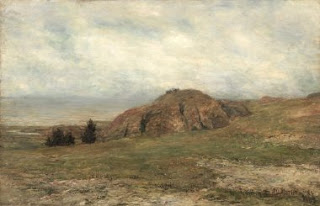Over the past year I have had a growing interest in printmaking. There are a lot of different methods of printmaking, so I wasn't sure what would be best suited to my style.
The most common form of printmaking practiced by artists has been some form of
intaglio, such as etching or engraving. These techniques are for the most part an extension of drawing that play into the strengths of well-trained artists.
Drypoint, is such a technique. In contrast to etching or engraving, that partly rely on chemicals to create an image, drypoint is direct. The artist scratches out the image directly onto a plate with a sharp point. The burr created on either side of this impression holds the ink in place to print. Compared to an etching, a drypoint has a warmer and richer appearance. Its major drawback, is that it wears out relatively quickly. The delicate burr is worn down with every print that is made. Realistically, only about 20 impressions can be made before a drypoint is worn out.
Intaglio prints require an expensive etching press. Since I don't have access to one, I considered making drypoints a dead end.
To my surprise, I discovered that there is a way to print drypoints without an etching press. Websites such as
this one cover the process in detail. This technique will only work with drypoints, other intalgio techniques still require the fancier equipment.
A metal plate is usually the basis of a drypoint print. Plastic, such as acrylic or plexiglass, can also be used. This has the advantage of being inexpensive and easy to cut. One can also see through clear plastic to a drawing on the other side.

I began by drawing out a loose outline of the image onto the plastic with a pen. The image will be a long-valley landscape scene.

After this was established, I began inscribing the lines into the acrylic with my drypoint needle. The black paper backdrop allows me to better see the work.

Once all of the lines are inscribed, the plate can be inked. The object to the top left is a dabber, for applying ink. I applied a large amount of ink, until the plate is completely covered.

The excess ink is wiped off of the plate using gauze, and torn phonebook pages. By wiping the image more or less, the final appearance can be tweaked. I took care to select what areas I wanted to highlight in the image.

The paper is dampened before it is printed. It was soaked in a tub of water for fifteen minutes.

The paper is then removed from the tub and placed in a towel to soak up excess water.

I used this old book press to make my print.

The plate is placed ink side up on a piece of mdf. The paper is then positioned on top.

A few sheets of felt are added over top the paper, and act as a cushion in the press. The print is finally ready to go in.

I was a bit disappointed to see how weak the final image came out. I haven't given up on this technique completely. With some experimentation, I hope to get some better results.































































